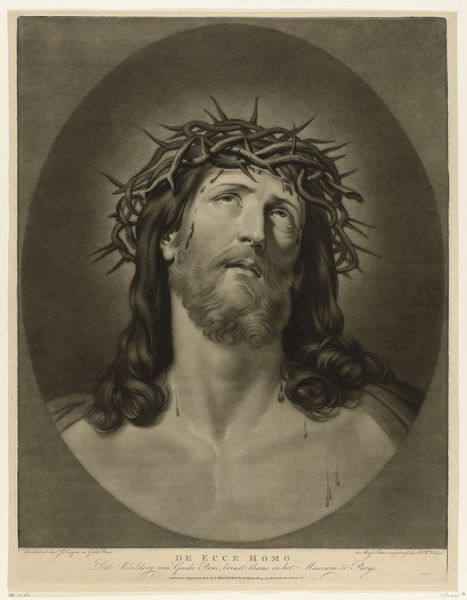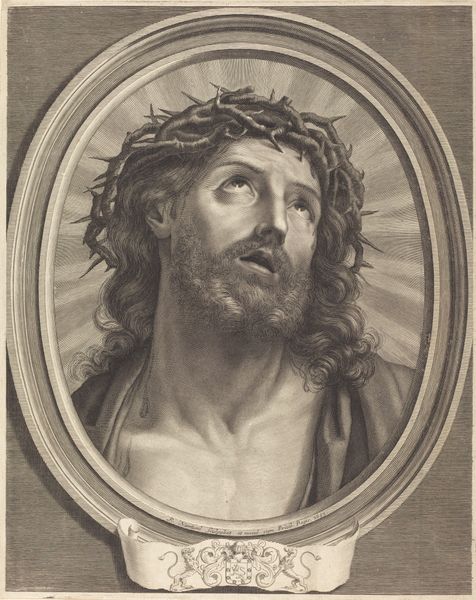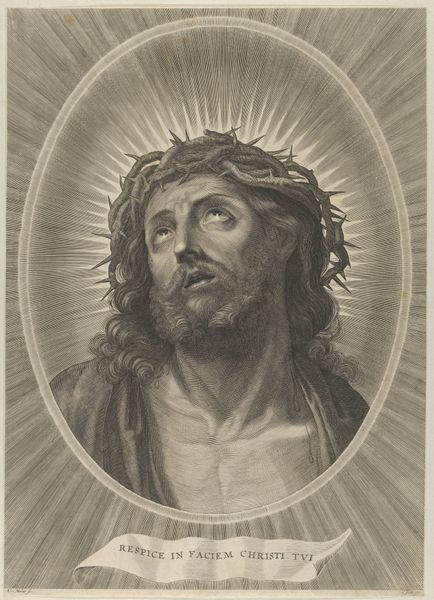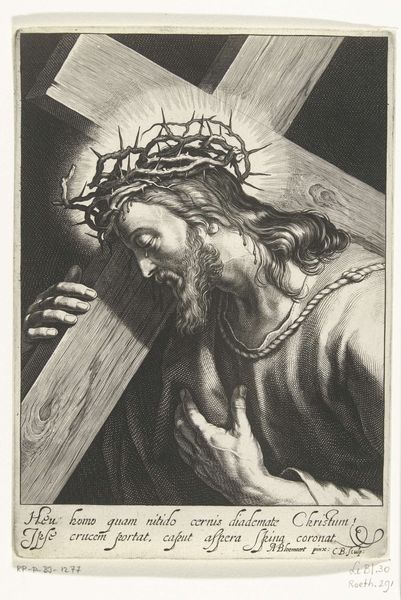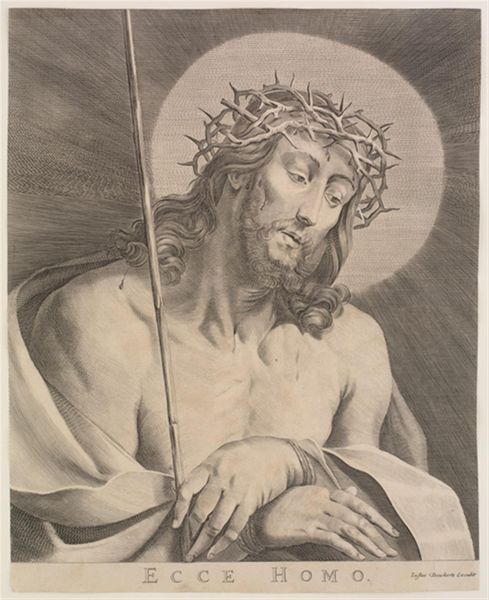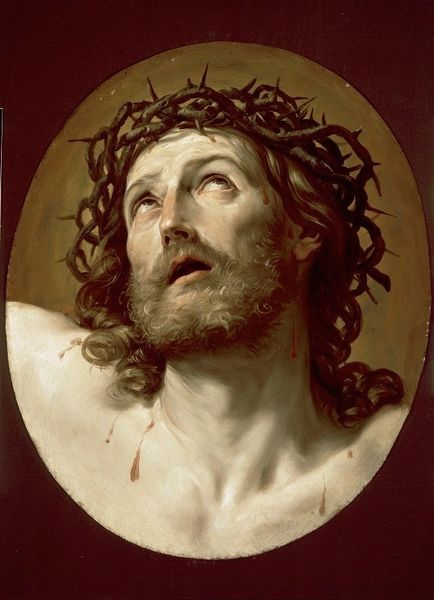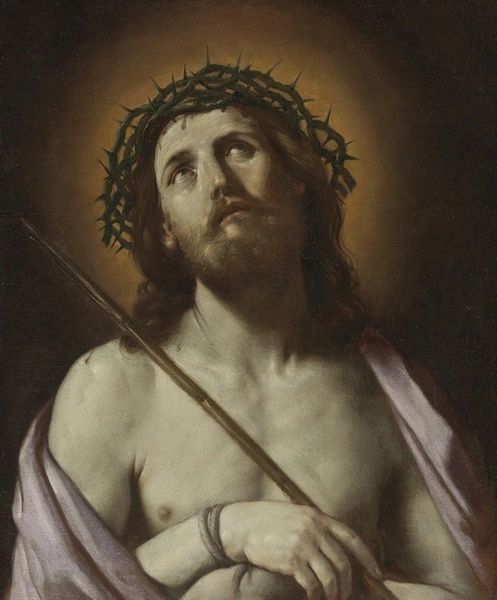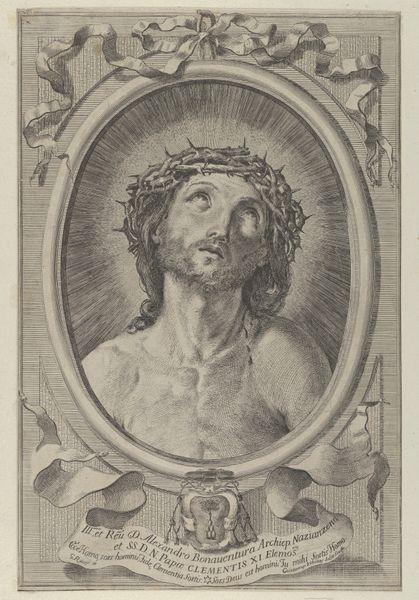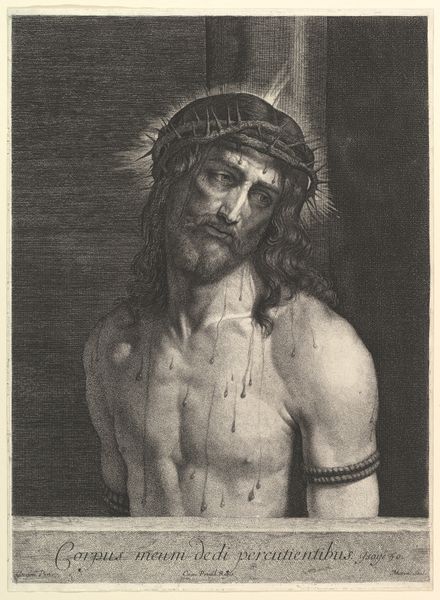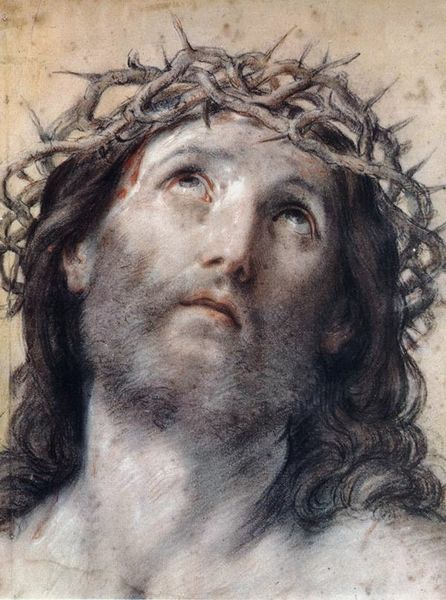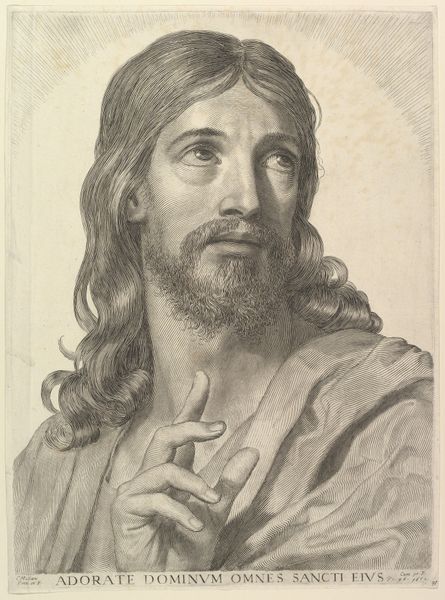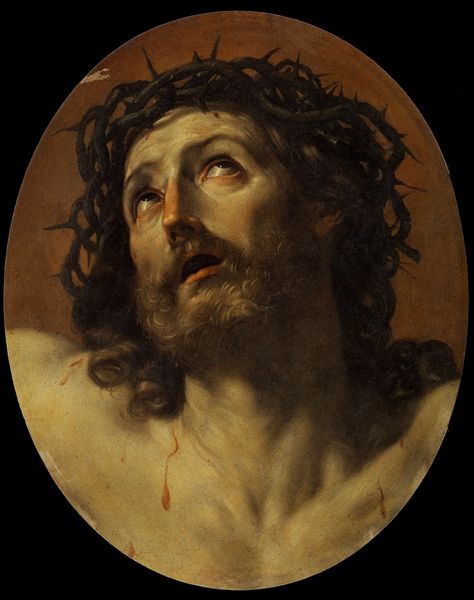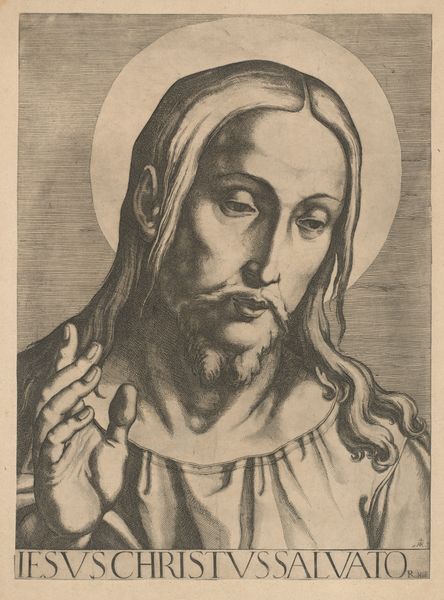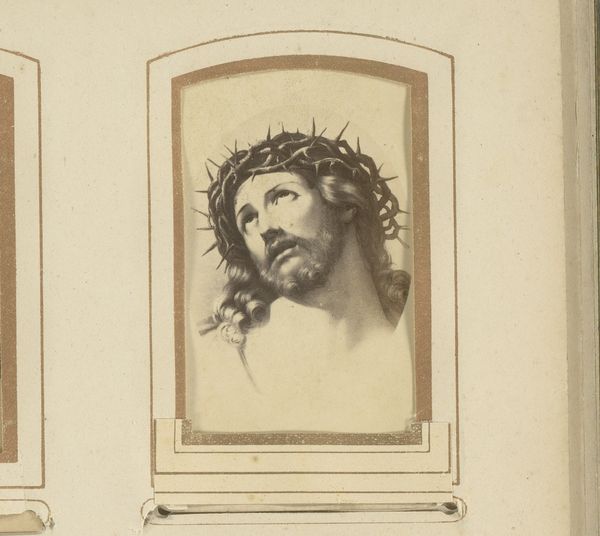
drawing, charcoal
#
portrait
#
drawing
#
charcoal drawing
#
figuration
#
romanticism
#
portrait drawing
#
charcoal
#
history-painting
#
academic-art
Dimensions: height 570 mm, width 430 mm
Copyright: Rijks Museum: Open Domain
Charles Howard Hodges made this mezzotint, "Ecce Homo," sometime in his career, using a copper plate, worked from dark to light. Hodges likely transferred an existing image onto the plate, then roughened the surface evenly with a tool called a rocker. This created a uniform burr that, when printed, would produce a solid black tone. The image would then be built up by selectively burnishing or scraping away the burr to create lighter areas. See how the face emerges softly from the darkness, the texture of the beard finely rendered, the blood appearing almost liquid? This subtractive process is labor-intensive, demanding great control and precision. Mezzotint was often used for reproductive prints, circulating images widely. Think about the role of such prints in disseminating religious iconography and how the labor of the printmaker contributes to this history. It blurs the line between craft and fine art.
Comments
No comments
Be the first to comment and join the conversation on the ultimate creative platform.
